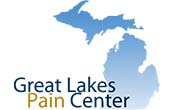Osteoarthritis is a gradual deterioration of the spinal column that occurs in everybody by the time they are 50 years of age. Fortunately, the majority of the people are not symptomatic from the arthritis. In contrast, however, for reasons we do not yet know, some patients may suffer severely. The deterioration causes a low-grade inflammation in the joints of the spinal column.
Each joint is composed of two surfaces of cartilage that are normally very smooth and lubricated by joint fluid. Normal joints move smoothly, similar to two pieces of glass with a little bit of water in between them. Gradual calcium build-up gets deposited into the soft tissue around the joints causing inflammation and the soft tissues to become very hard. This hardening is called spur formation because a small mound of bone develops. The spinal joint is very close to the nerve and is susceptible to this bony spur putting pressure on the nerve, causing significant pain in association with the arthritis.
Diagnosis
Patients with spur disease of the spine will have symptoms related to their arthritis such as pain in the neck or low back as well as pain secondary to nerve root irritation where the spinal cord starts to branch out. This will usually cause radiating pain down the arm or leg. A simple spine X-ray is usually adequate for diagnosis of spinal spurs. Spurs that are just forming can sometimes be diagnosed earlier with a CAT scan.
Treatment
There are essentially five treatment strategies for nerve irritation secondary to spurs.
- Medications. A combination of anti-inflammatory drugs and mild narcotics can be used to reduce pain.
- Physical therapy. Sometimes patients with spurs may benefit from mild traction, which reduces pressure on the nerve. In addition, keeping the joint from moving with a soft collar can help.
- Epidural injection. During an epidural injection, medications are placed close to the nerve to relieve the inflammation associated with the arthritis. These injections consist of anti-inflammatory cortisone type steroids. They are usually given as a series of two to four injections over a period of weeks. Relief will usually begin within 72 hours and can last for many months.
- Surgery. During surgery the spur is removed, relieving the pressure on the nerve. Unfortunately, the tendency to form arthritis still remains. The spur can regrow and pain may recur.
- Transcutaneous electrical nerve stimulator, also known as a TENS unit. This device is worn externally and delivers a mild electrical stimulation over the nerve, interfering with the conduction of pain. While the TENS unit does not change the underlying condition, it can definitely reduce symptoms while it is being worn.




